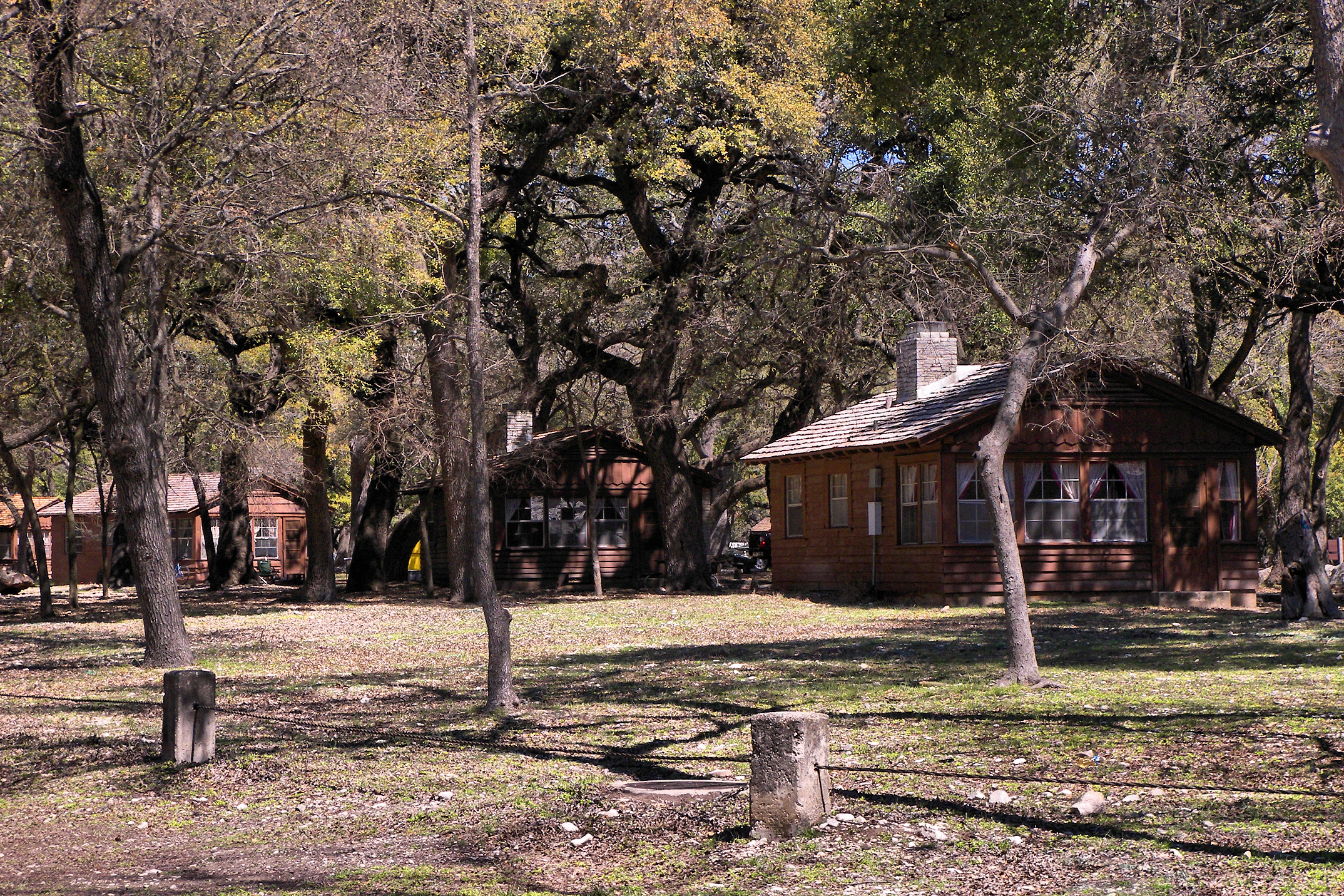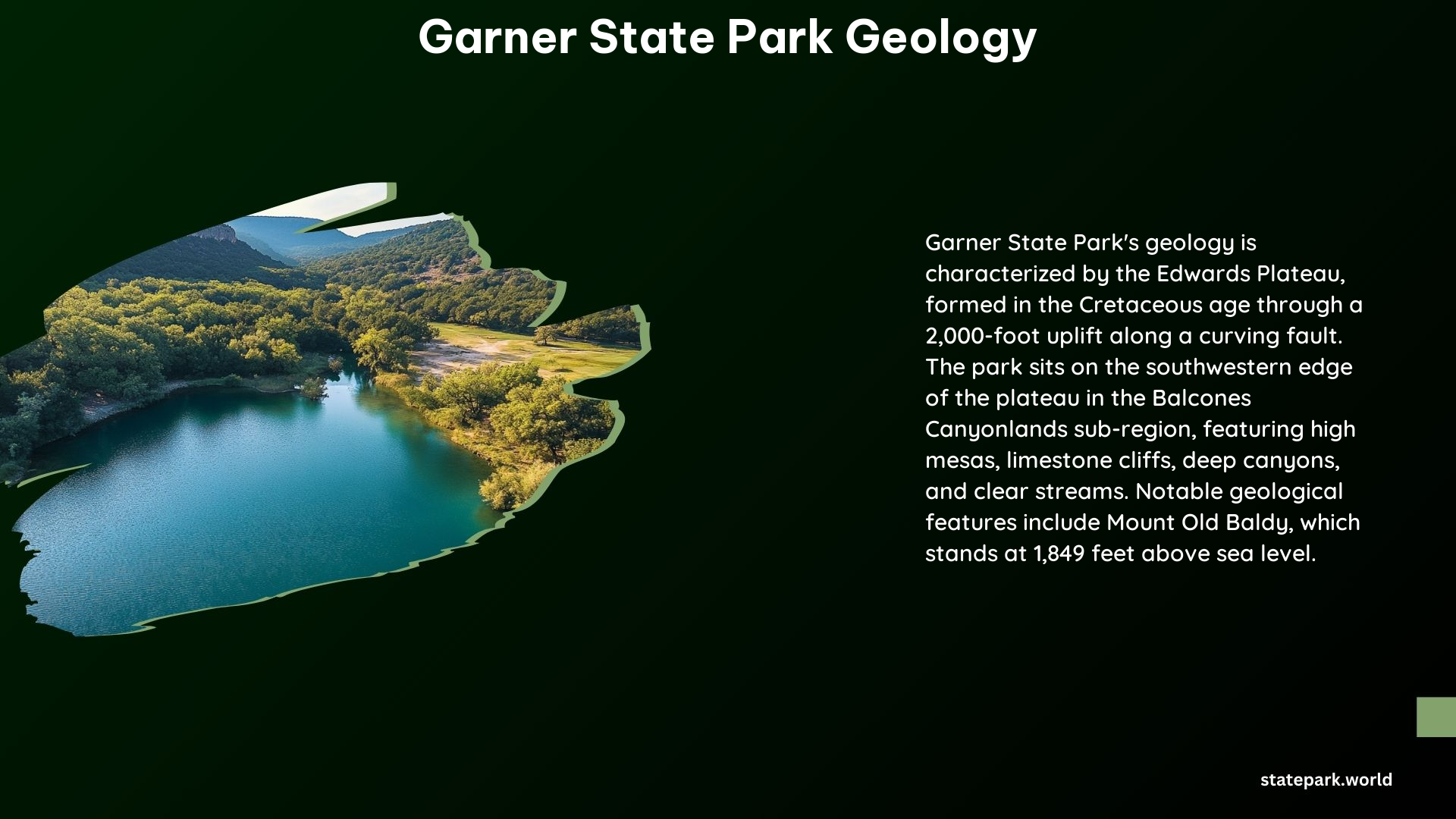Garner State Park, nestled in the heart of the Texas Hill Country, is a geological wonderland that captivates visitors with its stunning rock formations, crystal-clear streams, and towering limestone cliffs. This blog post delves into the fascinating geology of this picturesque park, providing insights for state park touring enthusiasts and tour planners alike.
What type of rocks are found in Garner State Park?

The rock formations in Garner State Park are primarily composed of two Cretaceous-era geological formations: the Glen Rose Formation and the Edwards Formation. These ancient rock layers were deposited over millions of years as the region was covered by warm, shallow seas.
The Glen Rose Formation, the older of the two, consists of limestone, shale, marl, and siltstone beds that were laid down along the shifting margins of the Cretaceous Sea. This formation is known for its diverse fossil record, including the footprints of dinosaurs that once roamed the area.
Overlying the Glen Rose Formation is the Edwards Formation, a thick layer of limestone that was deposited as the Cretaceous Sea spread across Texas. The interplay between these two geological formations has resulted in the park’s unique and captivating landscape.
What is the geological formation of the cliffs in Garner State Park?

The towering limestone cliffs that characterize Garner State Park are the result of the uplift and faulting of the Edwards Plateau. Approximately 2,000 feet of land was lifted along a curving fault, creating the dramatic terrain that visitors can explore today.
Over millions of years, the forces of weathering and erosion have carved these limestone cliffs into a variety of shapes and formations, including deep canyons, high mesas, and unique rock formations. The Frio River, which winds through the park, has also played a significant role in shaping the landscape, carving out the crystal-clear streams that are a hallmark of the park.
What is the soil development like on the cliffs of Garner State Park?
The soil development on the cliffs of Garner State Park is largely influenced by the underlying geology and the processes of weathering and erosion. The limestone bedrock of the Glen Rose and Edwards Formations has resulted in the formation of thin, rocky soils that are well-drained and nutrient-poor.
These soils are typically classified as Mollisols, which are characterized by a dark, organic-rich surface horizon. However, the thin nature of the soils and the steep, rocky terrain of the cliffs limit the depth and development of the soil profile.
The vegetation that thrives on the cliffs of Garner State Park, including a variety of drought-tolerant grasses, shrubs, and small trees, has adapted to these challenging soil conditions. The park’s unique geological features and the resulting soil development contribute to the overall biodiversity and ecological richness of the area.
What is the geological history of Garner State Park?
The geological history of Garner State Park stretches back millions of years, with the park’s rock formations and landscape features shaped by a series of complex geological processes.
During the Cretaceous period, the region that is now Garner State Park was covered by a warm, shallow sea, where the Glen Rose and Edwards Formations were deposited. Over time, the sea level fluctuated, and the area was subjected to periods of uplift and erosion.
Approximately 65 million years ago, a section of the land was lifted 2,000 feet along a curving fault, creating the Edwards Plateau and the dramatic terrain of Garner State Park. The forces of weathering and erosion have since carved the limestone cliffs, deep canyons, and crystal-clear streams that visitors can explore today.
The park’s geological history is not only fascinating but also provides a rich fossil record, with dinosaur footprints and other ancient fossils preserved in the rock layers. This geological legacy makes Garner State Park a unique and captivating destination for those interested in the natural history of the Texas Hill Country.
What geological features can visitors explore in Garner State Park?
Garner State Park offers a wealth of geological features for visitors to explore, each with its own unique story to tell. Some of the key geological attractions in the park include:
- Deep Canyons: The park’s deep canyons, carved out by the forces of erosion over millions of years, provide a glimpse into the park’s geological past.
- Crystal-Clear Streams: The Frio River, which winds through the park, is known for its crystal-clear waters, maintained by the riparian area along the riverbanks.
- High Mesas: The park’s high mesas were formed as a result of the uplift of the Edwards Plateau, offering panoramic views of the surrounding landscape.
- Carved Limestone Cliffs: The park’s limestone cliffs have been sculpted by the forces of weathering and erosion, creating unique shapes and formations that captivate visitors.
- Crystal Cave: The formation of caves, such as Crystal Cave, is a result of the weathering, erosion, and deposition processes that have occurred over millions of years.
Visitors to Garner State Park can explore these geological features through a variety of activities, including hiking, nature study, and ranger-led programs that focus on the park’s rich geological history and significance.
Conclusion
Garner State Park is a true geological gem, offering visitors a unique opportunity to explore the captivating Cretaceous formations that have shaped the landscape of the Texas Hill Country. From the towering limestone cliffs to the crystal-clear streams, the park’s geological features tell a story of millions of years of geological history, making it a must-visit destination for state park touring enthusiasts and tour planners alike.
References:
- Interpretive Guide to Garner State Park. (2021). Texas Parks and Wildlife Department. Retrieved from https://tpwd.texas.gov/publications/pwdpubs/media/pwd_br_p4507_061m.pdf
- Garner State Park. (n.d.). Wikipedia. Retrieved from https://en.wikipedia.org/wiki/Garner_State_Park
- Garner State Park. (n.d.). Nature Rocks Austin. Retrieved from https://naturerocksaustin.org/greenspace/garner-state-park
- Geology of Garner State Park. (2011). AuchterToth. Retrieved from http://auchtertoth.blogspot.com/2011/07/geology-of-garner-state-park.html
- A Look Inside Crystal Cave in Garner State Park. (2023). YouTube. Retrieved from https://www.youtube.com/watch?v=_Ep1RUCdSYw
